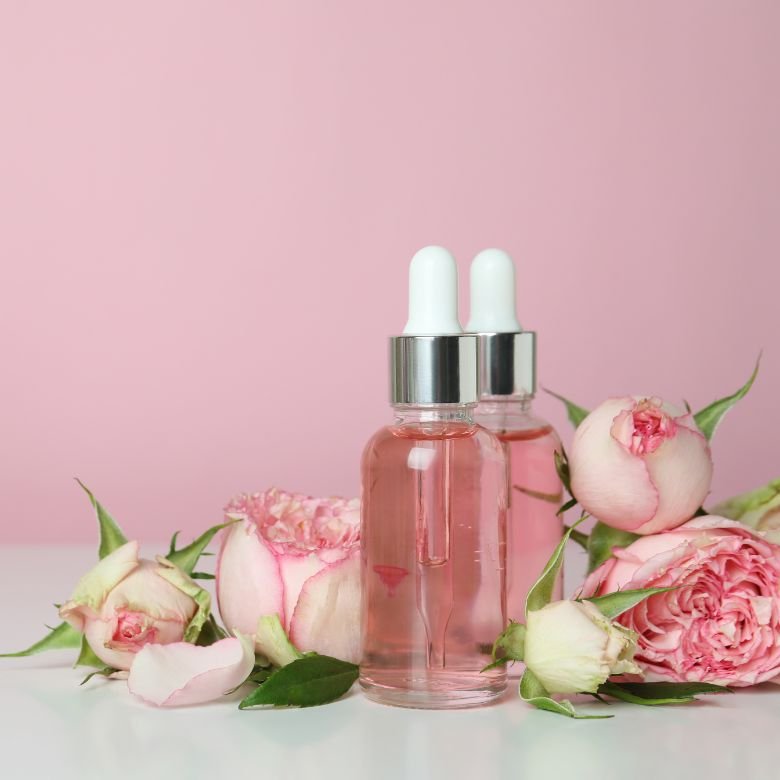When choosing body care products, we should pay great attention to their composition. Many people buy cosmetics containing almost exclusively plant-based substances. This is because we want to make sure that our purchases do not adversely affect either our health or the environment. The composition of the best products includes, among others, plant extracts. Find out what they are and why you should include them in your daily skincare routine.

Plant extract — definition
Producers of plant extracts primarily establish cooperation with representatives of the cosmetics industry. It is they who are interested in their use because of the numerous properties of these substances. Before discussing them, however, it is worth explaining what plant extracts are. This is what we call extracts obtained from different parts of plants, from flowers and fruits to twigs, leaves and seeds.
The term ‘plant extract’ (Latin extractum) is associated with the method of obtaining this substance, i.e. “extraction”. This is nothing more than extracting active ingredients from purified plant fragments using solvents such as glycerine, ethyl alcohol and water. It results in a solution of compounds (extract) that can be further modified to purify the substance.
- Among plant extracts, we can distinguish between herbal and fruit substances, for example.
- The active ingredients in question are used not only in cosmetics, but also in the pharmaceutical and food industries.
It appears that the course of the extraction process is crucial for the subsequent breakdown of the active substances, although it is not the only method for their classification.
Plant extracts — learn about their types!
You already know that extraction occurs using different solvents. The resulting plant extracts can be divided according to their origin (e.g. green tea extract or raspberry seed extract) or according to the substances used to obtain them (e.g. aqueous glycerine extract). Another classification method is based on the properties of the individual plant extracts.
We distinguish between:
- CO2 extracts, extracted using carbon dioxide, which allows the process to be carried out at a low temperature (this affects the concentration level of the plant extract in cosmetics),
- water-glycerine extracts with moisturising properties,
- alcohol extracts used in many liquids,
- oil extracts, which are characterised by easy absorption,
- concentrated extracts with a high concentration of active ingredients.
Read also: cosmetic composition.
Properties of plant extracts
It is difficult to distinguish all the properties of plant extracts, as they depend on the origin of the active ingredients. In addition, their benefits are so numerous that the substances in question are appearing in more and more products. Here are some examples.
- Aloe vera extract.
Aloe vera is known for its moisturising, soothing and regenerative properties. The extract from this plant works well in cosmetics recommended for people with sensitive skin. It can also reduce puffiness and swelling.
- Green tea extract.
Green tea contains high amounts of antioxidants, which protect the body from free radicals. Therefore, plant extracts of this origin contained in cosmetics delay the skin’s ageing process and protect it from sun and damage.
- Sea buckthorn extract.
This substance is a wealth of vitamins. Sea buckthorn plant extract soothes inflammation and helps fight skin discolouration.
- Chamomile extract.
Chamomile has anti-inflammatory, soothing and antibacterial effects. This plant extract in cosmetics prevents skin infections.
- Raspberry seed extract.
Helpful for acne-prone skin. In addition, it shows soothing and moisturising properties.
- Horsetail extract.
This plant extract is great for mature skin care. It improves colour, makes the skin more elastic and, when added to cosmetics dedicated to the scalp, prevents hair breakage.
- Pineapple extract.
It exhibits peeling and cleansing properties. Pineapple contains enzymes that are used both in cosmetics and in dietary supplements in the form of extracts.

- Rose extract.
Included in the group of water-glycerine plant extracts. It works well in the care process for mature, vascular and acne-prone skin.
- Oregano extract.
It exhibits antibacterial, anti-inflammatory and anti-fungal properties. Soothes inflammation. It comes in the form of an oil, among other things, but it has to be used very carefully, not exceeding the recommended dose.
- Hibiscus extract.
This is another aqueous-glycerin extract that protects the skin, provides elasticity and improves tissue health. It exhibits antioxidant and antifungal properties and is an ingredient in many shampoos.
There are also a number of other plant extracts, e.g. extracts of honeysuckle, liquorice and other valuable herbs. It is worth selecting them according to your needs to get the best results.
Read also: cosmetic intermediates.
Plant extracts and their use in cosmetics
Cosmetic manufacturers use plant extracts in many preparations. Depending on their operation and method of extraction, we can find them in, among others:
- shampoos (aloe vera, green tea),
- creams (rose, raspberry),
- body lotions (valerian, raspberry),
- serum and tonic (tea tree),
- balsams (coniferous trees),
- essential oils (mint, melissa, chamomile).
See ready-made cosmetic recipe suggestions from the PCC Group.
The selection of active ingredients for each product is based on their texture and properties. However, the choice in each of the categories of skincare products with plant extracts is very wide. This ensures that every customer will find the ideal product among them.
How can plant extracts be used?
The raw materials for natural cosmetics offer a range of beneficial uses for our health. You can use plant extracts in many different ways. Some are available as spot-on oils or as a base for making homemade cosmetics. Others are included in ready-to-use emulsions, creams or shampoos. The right ones can work real wonders for your skin. Find out how to make homemade cosmetics.
Check out the other blog articles on our website for further tips on using natural cosmetics.
- Paulina Malinowska, Justyna Kiewlicz, Ekstrakty roślinne — wielofunkcyjne składniki kosmetyków, https://bazekon.uek.krakow.pl/zeszyty/171248099
- Anna Ratz-Łyko, Składniki aktywne pochodzenia roślinnego w kosmetykach anti-age, https://www.researchgate.net/profile/Anna-Ratz-Lyko/publication/257606931_Skladniki_aktywne_pochodzenia_roslinnego_w_kosmetykach_anti-age/links/004635257c94a320f7000000/Skladniki-aktywne-pochodzenia-roslinnego-w-kosmetykach-anti-age.pdf
- Stanisław Bursa: Chemia fizyczna. Wyd. 2 popr. Warszawa: Państwowe Wydawnictwo Naukowe, 1979